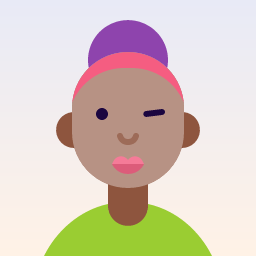Hello and thank you are two fundamental phrases that can help you establish connections, show politeness, and make a positive impression when interacting with Dutch speakers. In this guide, we will explore various ways to say hello and thank you in Dutch, including formal and informal expressions. While regional variations exist, we will focus on the most commonly used phrases. Let’s dive in!
Saying Hello in Dutch
When greeting someone in Dutch, it’s crucial to consider the level of formality. Dutch culture emphasizes egalitarianism, meaning that people generally prefer informal greetings over formal ones. Here are some common phrases:
- Hallo (Informal) – This is the most basic and informal way to say hello in Dutch. It’s similar to the English “Hello” or “Hi.” You can use this casual greeting with friends, family, colleagues, or people you are familiar with.
- Dag (Informal) – Another informal way to greet someone in Dutch is by saying “Dag.” It’s equivalent to “Good day” in English. This greeting can be used anytime during the day and with acquaintances or people you’re familiar with.
- Goedemorgen (Formal) – When it comes to formal greetings, “Goedemorgen” is the appropriate phrase to use in the morning. It translates to “Good morning” in English and should be used with individuals you don’t know well or in more professional settings.
- Goedemiddag (Formal) – For a formal greeting in the afternoon, you should say “Goedemiddag,” which means “Good afternoon.” Use this phrase in professional or unfamiliar situations during the afternoon.
- Goedenavond (Formal) – When greeting someone in the evening, the formal phrase “Goedenavond” should be used. It translates to “Good evening” in English and is appropriate for formal or professional contexts.
Saying Thank You in Dutch
Expressing gratitude is essential in any language. In Dutch, there are a few different ways to say thank you depending on the situation and level of formality. Here are some common phrases:
- Dank je/Dank je wel (Informal) – “Dank je” or “Dank je wel” are informal ways to say “Thank you” in Dutch. “Dank je” is a shorter version, while “Dank je wel” is slightly more polite. These expressions are suitable for friends, family, or colleagues you are familiar with.
- Bedankt (Informal) – Another common informal way to express gratitude is by saying “Bedankt.” It’s similar to the English phrase “Thanks” and can be used in various informal situations.
- Dank u (Formal) – “Dank u” is the formal equivalent of “Thank you” in Dutch. This expression should be used when addressing someone you don’t know well, elders, or in professional settings. It shows a higher level of respect and politeness.
- Hartelijk dank (Formal) – To convey a heartfelt “Thank you” in a more formal manner, you can use “Hartelijk dank.” It translates to “Heartfelt thanks” and is suitable for more significant gestures or when expressing deep gratitude.
Additional Tips and Examples
Here are some additional tips and examples to enhance your understanding of greetings and expressions of gratitude in Dutch:
Greetings:
Example 1:
Person A: Hallo! Hoe gaat het met je? (Hello! How are you?)
Person B: Goed, bedankt! En met jou? (Good, thank you! And you?)Example 2:
Person A: Goedemiddag, kunt u mij alstublieft helpen? (Good afternoon, can you please help me?)
Person B: Natuurlijk, wat kan ik voor u doen? (Certainly, what can I do for you?)
Expressions of Gratitude:
Example 1:
Person A: Dank je wel voor je hulp! (Thank you very much for your help!)
Person B: Graag gedaan, geen probleem! (You’re welcome, no problem!)Example 2:
Person A: Hartelijk dank voor de cadeaus. (Heartfelt thanks for the gifts.)
Person B: Het is mijn genoegen, ik ben blij dat je ze leuk vindt. (It’s my pleasure, I’m glad you like them.)
Remember, using appropriate greetings and expressions of gratitude can greatly enhance your interactions with Dutch speakers. Practice them to make a positive impression and display your respect and appreciation for the language and culture.
We hope this guide has provided you with a comprehensive understanding of how to say hello and thank you in Dutch. Enjoy practicing your new Dutch phrases and greetings!


